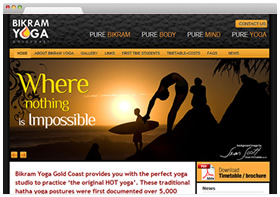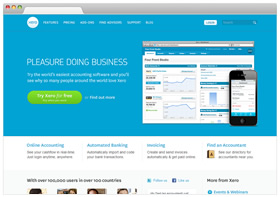 Only a few years ago small business owners with a website were ahead of the pack. If they had a CMS that ran the website they were seriously ‘out there’. Trust me, I’ve been building CMS-based sites for 5 years and in the early days we didn’t even tell people they were able to update their own sites because they didn’t want to know about it.
Only a few years ago small business owners with a website were ahead of the pack. If they had a CMS that ran the website they were seriously ‘out there’. Trust me, I’ve been building CMS-based sites for 5 years and in the early days we didn’t even tell people they were able to update their own sites because they didn’t want to know about it.
A lot has changed since those days. Systems like Joomla and WordPress are now mainstream, business owners are pretty tech savvy and most serious business owners know that its easy (and cheap) to have a dynamic CMS-based website. But all websites are not equal and these days you need to do something more than just ‘reserve your place’ online. So what separates an average small business website from a great one?
In my next 2 articles I’ll present 8 features I have discovered over the years that you’ll see on great small business websites. Here are the first 4 features.
Feature 1 – They are easy on the eye
Most people can appreciate good design – something that looks good. And I’m sure you will agree that having something that looks great and is effective at representing your brand consistently and professionally online is important. Bad designs turn people off your business and good designs aren’t that hard to achieve. Great small business websites look good. They start with a clean, professional logo and slick images and from there it’s easy to design a nice looking site. They have consistent colors, lots of white space and a modern and professional style.
Tip – If your logo and images are old and out of date replace them before re-designing your site. Fiverr.com or 99designs.com can be cheap and useful for the logo and professional royalty free stock photos are cheap and plentiful (try sxc.hu, istockphoto.com or dreamstime.com).
Feature 2 – They are designed around a goal that is measured
 Steve Jobs knows about design. He said “Design is not just what it looks like and feels like. Design is how it works”. Every great small business website has a purpose or a goal. This goal goes far beyond the elements of design but it starts with the design.
Steve Jobs knows about design. He said “Design is not just what it looks like and feels like. Design is how it works”. Every great small business website has a purpose or a goal. This goal goes far beyond the elements of design but it starts with the design.
It’s common these days to fill up a homepage with all sorts of stuff – a banner, a slider, a menu (or 3), some news items, a twitter feed, a welcome message, testimonials etc). But from a design point of view what stands out? Is it clear what you want your customer to do?
The Xero.com site is a great example of designing around a goal.
- There is a lot of info on the homepage but the most important part up at the top is clean, clear, and has plenty of free space / not much text.
- The goal is obvious – ‘Try the world’s easiest accounting software for free’ which stands out as the call to action.
- The goal is supported by images that showcase what it is, some brief text that explains why it’s different and an alternative course of action for people who aren’t quite ready yet (which will ultimately lead back to the goal).
- In addition there are testimonials from real people (with photos) that re-enforce their message.
And of course having the goal is only the first step. Measuring it is critical and enables great website owners to know whether they are on track. Google Analytics is the tool of choice for small business owners when it comes to measuring website goals.
Feature 3 – They are easy to maintain and get support
Search engines and humans both love new and authentic content. It’s no longer effective to hire a web developer to change the content on your site. Great websites are updated regularly by the owner
and they can be extended and modified easily with 3rd party extensions. But not all content management systems are equal. Great small business websites give the owner freedom and control over:
- Adding / editing content
- Installing plugins or extensions
- Upgrading the system to the latest version when necessary
- Choosing support services like hosting and web development
A system like WordPress does all of this. It’s very easy to use, upgrade, maintain and extend. Everyone knows about it, help is easy to find and it’s free. It’s pretty hard to argue with that.
Feature 4 – They engage visitors
At the core of all small business marketing activities is the desire to land a customer. So it’s common for people to talk about ‘conversions’. However generating a customer is generally a long process and only a
small amount of visitors to your site can be converted right away. For this reason, great small business websites don’t just try to convert every customer. They try to get visitors to:
- Consume and share content by creating compelling resources, text, video, PDF downloads etc.
- Connect by opting in by signing up for a newsletter, following on Twitter, or ‘liking’ on Facebook.
- Convert by buying something or sending through an enquiry once their trust has been gained through the first 2 steps.
Put simply they give away great information for free, they encourage people to share it and they build trust during the process while encouraging people to opt-in. This makes them effective at engaging most of their website visitors instead of just the ones that are ready to buy at that particular time.
Conclusion
Having a website is not enough these days but the good news is having a great website is not that hard once you know what to do. Start with a nice design, a purpose (which is tracked), a decent CMS which gives you the control you need and some great content and tools to share / opt-in and you are well on the way.
I hope you have enjoyed this post. In my next post I’ll go through the final 4 features of great small business websites.